|
Blog Feeds
Anti-Empire
The SakerIndymedia Ireland is a volunteer-run non-commercial open publishing website for local and international news, opinion & analysis, press releases and events. Its main objective is to enable the public to participate in reporting and analysis of the news and other important events and aspects of our daily lives and thereby give a voice to people.
Lockdown Skeptics
Voltaire NetworkVoltaire, international edition
|
A Most Amazing Henge - Lismullin international |
history and heritage |
feature international |
history and heritage |
feature
 Friday May 11, 2007 11:32 Friday May 11, 2007 11:32 by Muireann Ni Bhrolchain - Campaign to Save Tara by Muireann Ni Bhrolchain - Campaign to Save Tara info at savetara dot com info at savetara dot com
 We told you so!
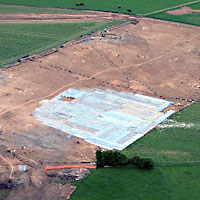
Lismullin's Temple
Experts had warned for years that the M3 should never have been routed through the Gabhra (Tara-Skreen) Valley. Related Links: Tara Watch submits DVD on Tara to Government. | Roestown national monument at Tara removed | Press statement from Campaign to Save Tara | Tara; The Inconvenient Truth by Martin Hogan, NUI Senate Candidate | Tara; The Inconvenient Truth by Martin Hogan, NUI Senate Candidate | Corruption Watch at Tara - Lets do some digging of our own
We told you so!  by Mark C by Mark C Mon May 14, 2007 20:04 Mon May 14, 2007 20:04   Well done on a very well put together piece, keep up the pressure.  by historian by historian Sat May 12, 2007 01:30 Sat May 12, 2007 01:30   Great feature. Some decent, knowledge-based coverage badly needed. well done.  by M. Ni Bhrolchain by M. Ni Bhrolchain Wed May 09, 2007 15:56 Wed May 09, 2007 15:56   The campaign takes the opportunity to talk to the media who are really interested at last. Long may it last.  by M. Ni Bhrolchain by M. Ni Bhrolchain Wed May 09, 2007 15:52 Wed May 09, 2007 15:52   Here are close up views of the site from the ground taken on 29th April and 3rd May 2007.
 by M. Ni Bhrolchain by M. Ni Bhrolchain Wed May 09, 2007 15:44 Wed May 09, 2007 15:44   Now they know they have something. All covered up under blue plastic with little round stones  by M. Ni Bhrolchain by M. Ni Bhrolchain Wed May 09, 2007 15:39 Wed May 09, 2007 15:39   Photos taken on Sunday 1st April - the day that the Sunday World April Fool piece was published.
 by M. Ni Bhrolchain by M. Ni Bhrolchain Wed May 09, 2007 15:31 Wed May 09, 2007 15:31   Here is the heavy machinery used at Lismullin. No wonder the NRA describe the area as "truncated" by ploughing as they were ploughing through the site.
 by M. Ni Bhrolchain by M. Ni Bhrolchain Wed May 09, 2007 15:20 Wed May 09, 2007 15:20   This piece of pottery was lying in the spoil heap in full view from the neighbouring field. Need I say more?
 by M. Ni Bhrolchain by M. Ni Bhrolchain Wed May 09, 2007 14:53 Wed May 09, 2007 14:53   A spoil heap is the name used for the soil that is scraped away and left to one side. This is not examined by companies working on roads projects.
 by Muireann Ni Bhrolchain by Muireann Ni Bhrolchain Wed May 09, 2007 14:47 Wed May 09, 2007 14:47   These are four photographs of the wooded area at Lismullin, very close to the henge. Huge diggers were used as can be seen. The massive depth was cut and trees felled without archaeological supervision until the Campaign drew this to the attention of the media and the Museum.  by authur - plo by authur - plo Wed May 09, 2007 14:22 Wed May 09, 2007 14:22   such things called catilist by ancient sparta----works like the oraoaclas---take into account population under influcence of war------regions there in-------------druid acctivetee---mans realshoinship with animals-----intellgence gatering of the nature of the lords stuff other lands --how to shift the tide not become the hen  by Muireann Ni Bhrolchain - Campaign to Save Tara by Muireann Ni Bhrolchain - Campaign to Save Tara  Wed May 09, 2007 14:12 Wed May 09, 2007 14:12 muireann at savetara dot com muireann at savetara dot com   To return to original thread here -  by Muireann Ni Bhrolchain - Campaign to Save Tara by Muireann Ni Bhrolchain - Campaign to Save Tara Tue May 08, 2007 18:53 Tue May 08, 2007 18:53   PRESS RELEASE – Campaign to Save Tara  by Muireann Ni Bhrolchain by Muireann Ni Bhrolchain Tue May 08, 2007 17:09 Tue May 08, 2007 17:09   The independent organisation on Irish heritage Duchas was dismantled by this administration.  by hannah by hannah Tue May 08, 2007 16:59 Tue May 08, 2007 16:59   What role does DOELG have in this? their archaeologists are supposed to approve licence to excavate. has this been done?  by Muireann Ni Bhrolchain by Muireann Ni Bhrolchain Tue May 08, 2007 16:28 Tue May 08, 2007 16:28   According to local sources, the discovery was probably intended to be hidden. The site was damaged by the huge earthmoving equipment according to the same sources.  by HG by HG Tue May 08, 2007 12:19 Tue May 08, 2007 12:19   Build the road over the henge using 500 archaeologists to hold it up  by Roscommon by Roscommon Tue May 08, 2007 12:17 Tue May 08, 2007 12:17   Keep up the good work. Tara must be saved.  by Sharon D. by Sharon D. Tue May 08, 2007 12:10 Tue May 08, 2007 12:10   "Isn't it very shocking all the same that our cuddly Celtic ancestors took down and abandoned this site. Or destroyed / burnt it? What does that tell you about its importance to them? It seems they are more important then us, their descendants."  by M3 for M3eath by M3 for M3eath Tue May 08, 2007 12:00 Tue May 08, 2007 12:00   Isn't it very shocking all the same that our cuddly Celtic ancestors took down and abandoned this site. Or destroyed / burnt it? What does that tell you about its importance to them? It seems they are more important then us, their descendants.  by Michael Martin - Independent Tara Campaigner by Michael Martin - Independent Tara Campaigner Mon May 07, 2007 23:20 Mon May 07, 2007 23:20 Wicklowwolf at yahoo dot com Wicklowwolf at yahoo dot com   Press briefing and protest tomorrow. Everybody welcome. For further details click on  by Muireann Ni Bhrolchain - Campaign to Save Tara by Muireann Ni Bhrolchain - Campaign to Save Tara Mon May 07, 2007 19:19 Mon May 07, 2007 19:19   The campaign to Save Tara took action for the media at Lismullin on May 3 2007. The event was captured by RTE News.  by Muireann Ni Bhrolchain - Campaign to Save Tara by Muireann Ni Bhrolchain - Campaign to Save Tara Mon May 07, 2007 19:10 Mon May 07, 2007 19:10   Here is the story of the Battle of Gabhra - where the legendary Fianna are said to have been destroyed - in this very landscape |

























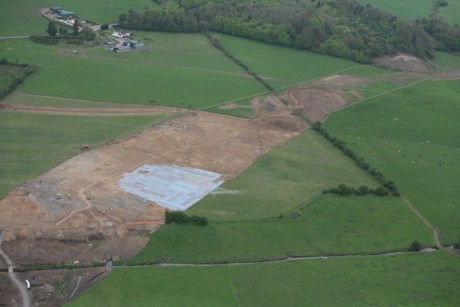

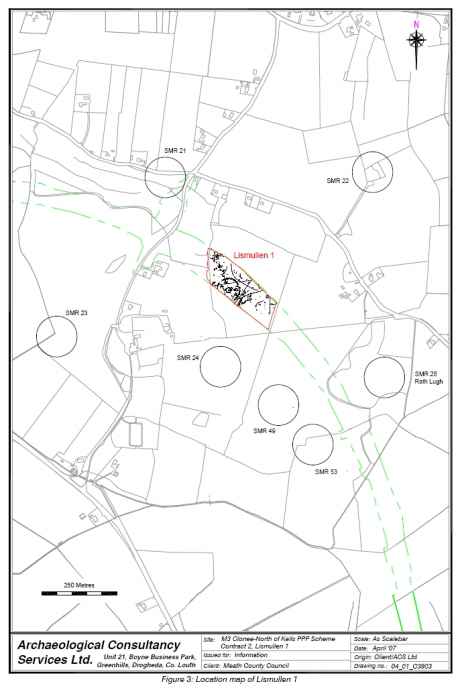
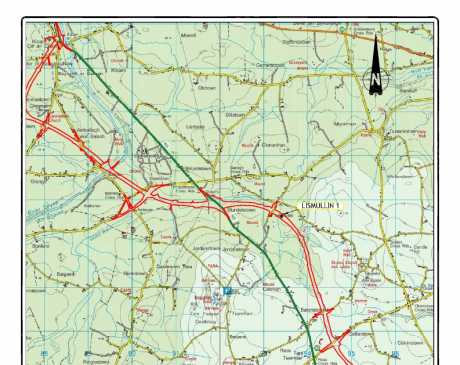
 printable version
printable version

 Digg this
Digg this del.icio.us
del.icio.us Furl
Furl Reddit
Reddit Technorati
Technorati Facebook
Facebook Gab
Gab Twitter
Twitter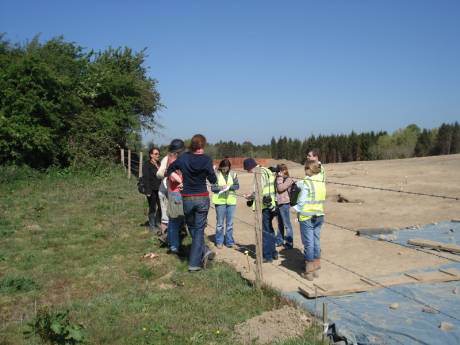
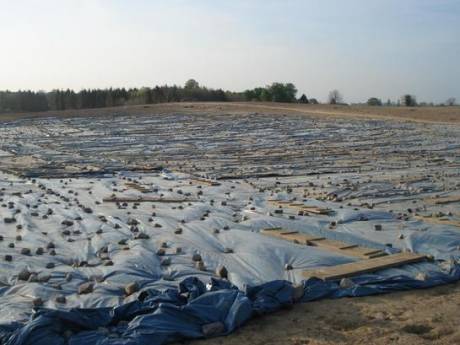
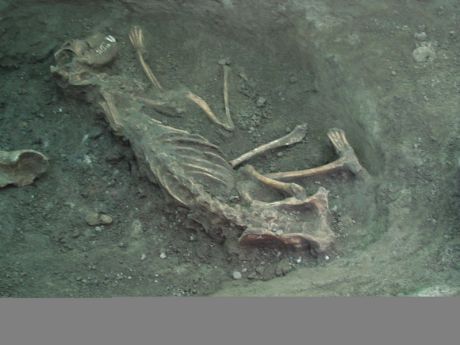

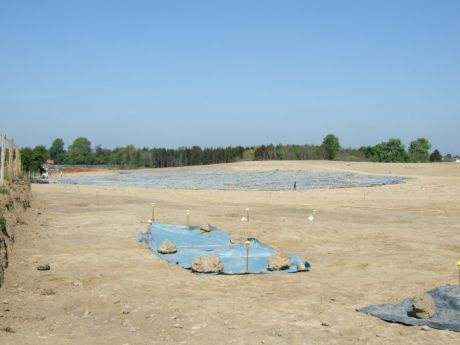
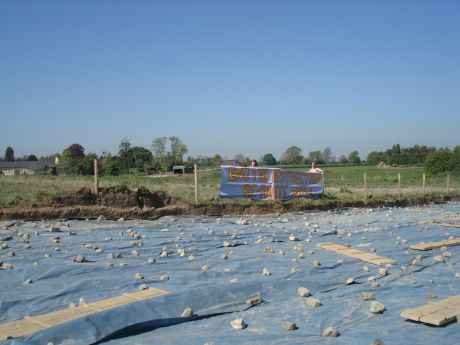

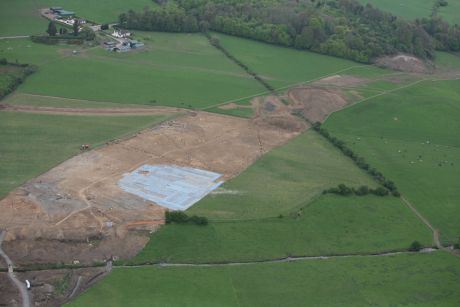
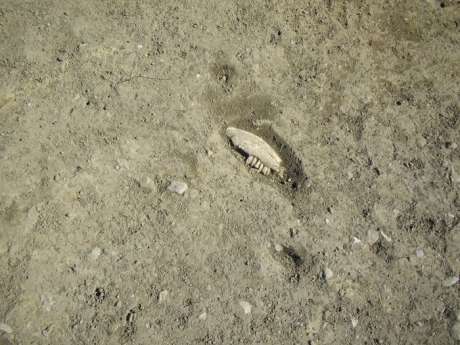
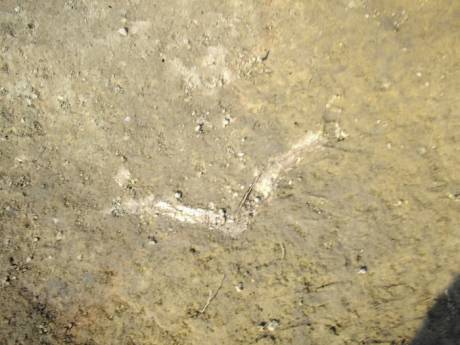

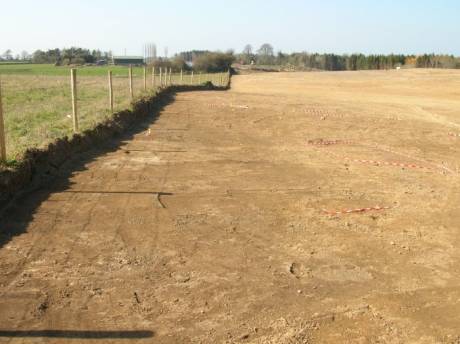
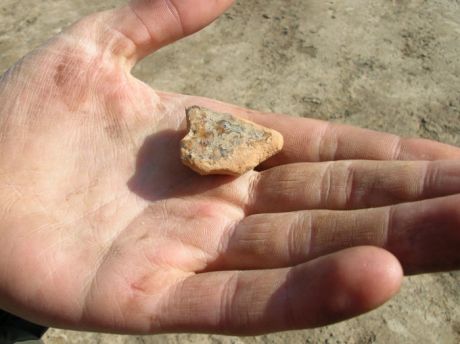
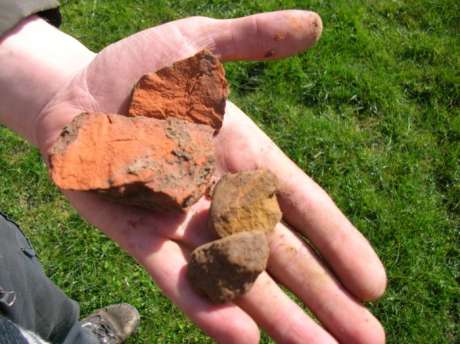
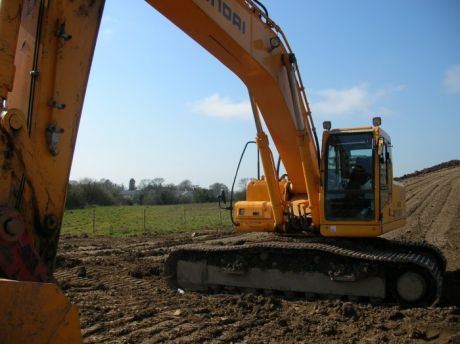
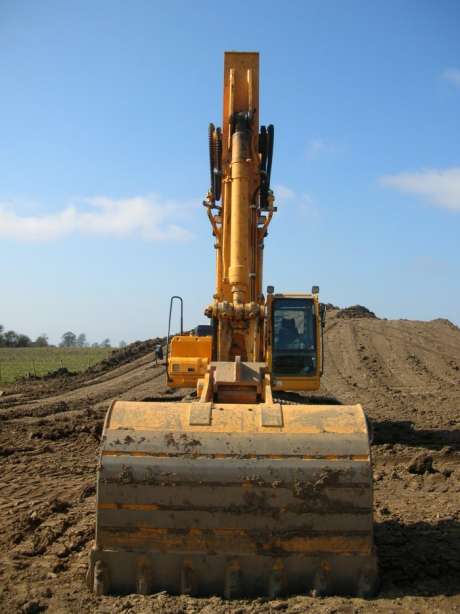
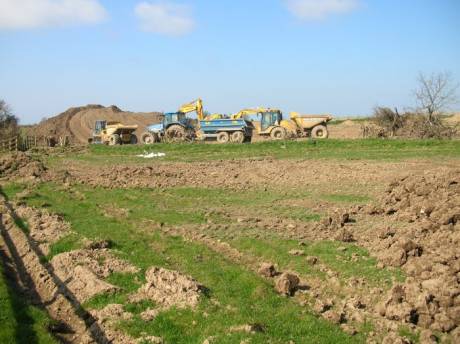
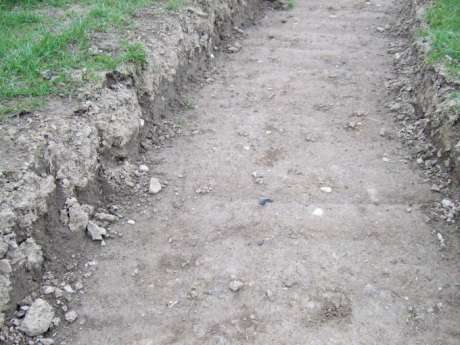
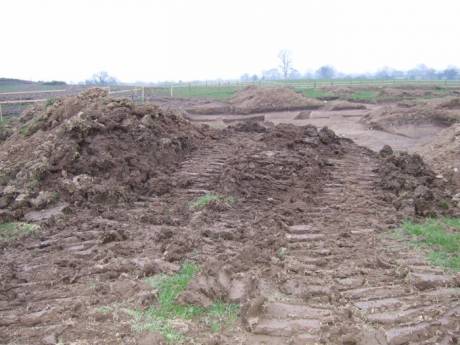
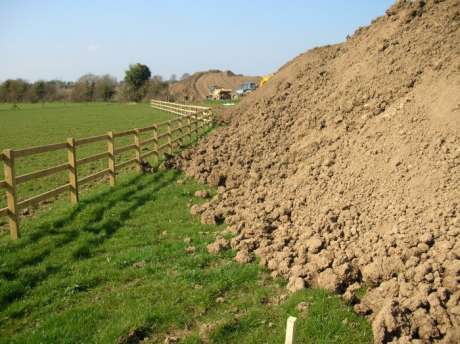
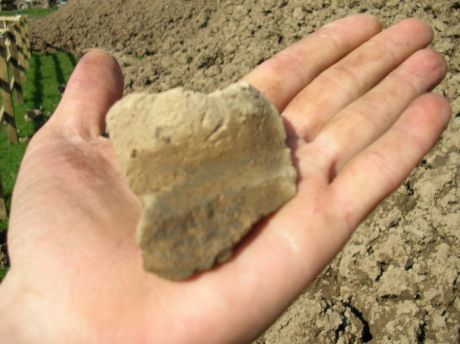
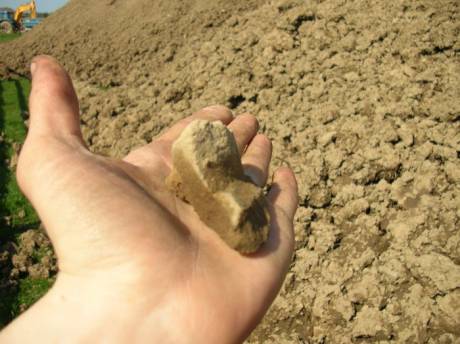
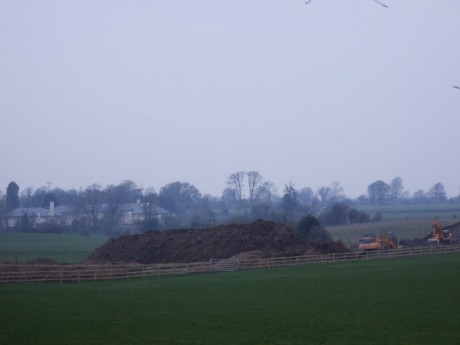
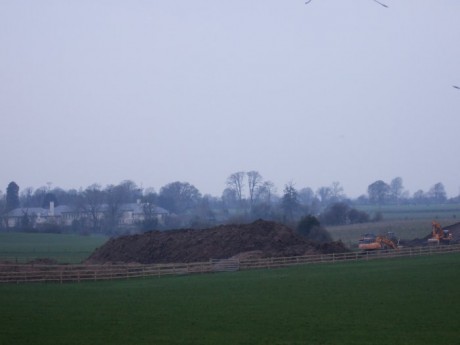
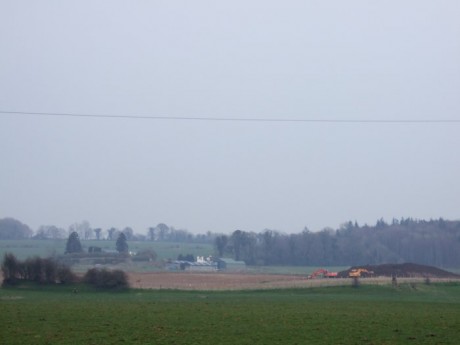
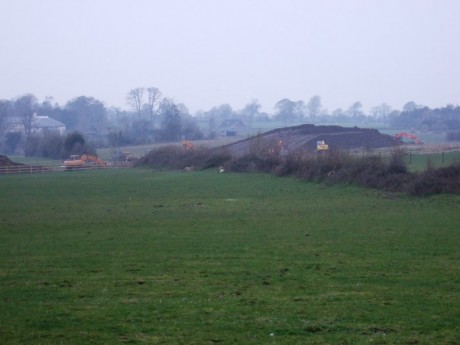

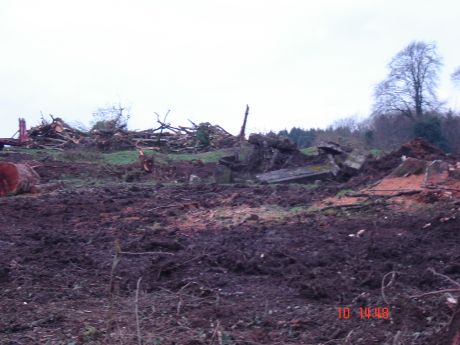
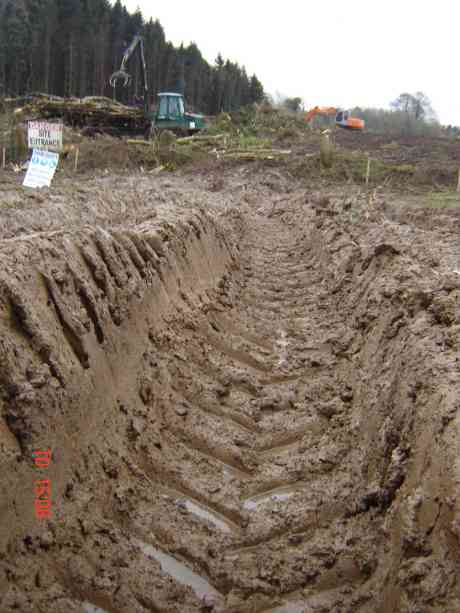
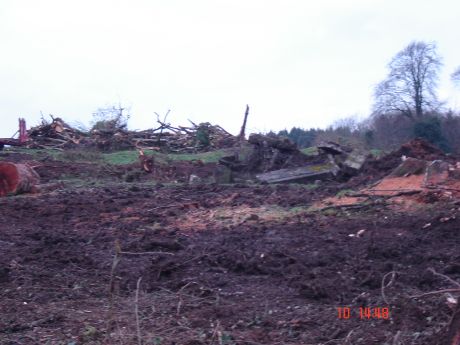

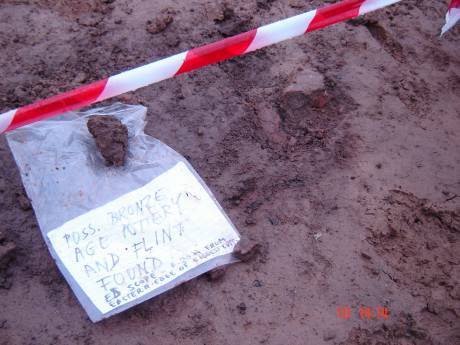
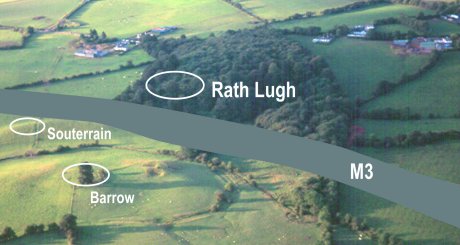
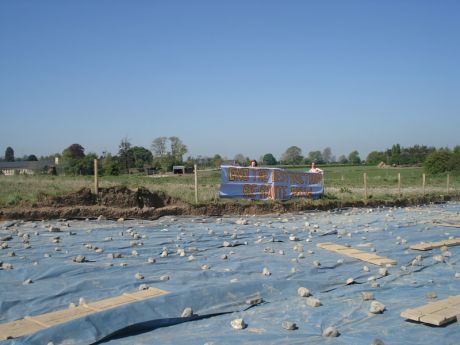
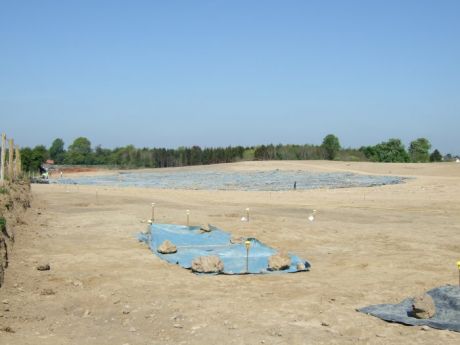
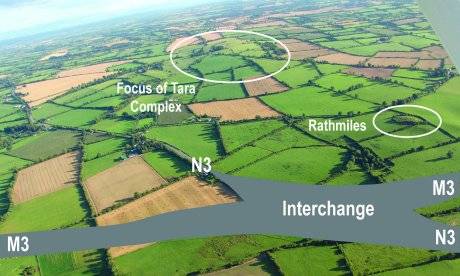
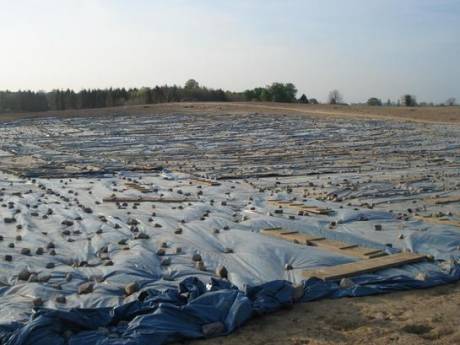

View Comments Titles Only
save preference
Comments (49 of 49)
Jump To Comment: 49 48 47 46 45 44 43 42 41 40 39 38 37 36 35 34 33 32 31 30 29 28 27 26 25 24 23 22 21 20 19 18 17 16 15 14 13 12 11 10 9 8 7 6 5 4 3 2 1What is going on?
If Gormley does not prevent this cultural vandalism, He should resign as minister.
The greens have to prove that they have a bit of backbone lest they be judged " Green by name but Yellow by nature"
yet another sell out by the free state. when will it stop?they have nearly succeeded in doing britains dirty work by destroying our language,our history, our freedom and our minds.(think about it)
what political party if elected do you think would have stopped this "highway to the rat race"?
Stonehenge as well as other henges are cranes to move and transport heavy loads.
The technology discovered by pre-historic "engineers" makes use of nutating gears
as mechanic speed reducers to roll ropes arround giant nutating circular structures.
J. Caeiro Antunes
(All information may be reproduced if source name "J. Caeiro Antunes" is referred)
For more information visit my site: henges.no.sapo.pt
(note that this site has copyrighted material)
Of course, Tara declined, Dublin replaced it. Cant you guys see its important to establish it in terms of a continuity of our political and cultural history?
The Irish are so ashamed of their own culture is really funny. Funny little Irish right wing goons. No wonder the Brits laugh at you!
If I discount the archeological importance of the Tara site and take just a practical view, then I must consider geologic impact of a roadway through that area, not on a short but a long term basis. Although on this site are some contour mappings showing approximate levels they are not explicit enough to bring into view for a detailed examination to examine long term impact.
Currently too, I shall include the fact that in recent times by way of the military/industrial/governmental complex to overlook these impacts to satisfy political goals at the expense of certain peoples this complex seeks to undermine. A good example of this type of business being conducted is in the United States concerning a section of highway through the Appalacians known as I-40. This highway due to so-called acts of nature has been undermined and detoured many times in the last few years due to flood, ice, and landslide. In itself this area of I-40 near the Tennesse/North Carolina line has become a maintenance black hole constantly requiring repair. I suspect in years to come that this will continue to get worse as the forces that pushed for this highway were political only and engineering principals took a back seat due to the strength of these forces.
In ancient times, prior to construction of earthworks the functionality of the earthwork was evaluated on a long time basis not by itself, but in relationship to all connected sites within the landscape. From what I can tell based on the limited images on this site, it appears that Tara may in fact patch together a landscape which has a left-handed vortex subdued. In this sense, the harnessing together of that type of energy would be a "FANTASTIC PLACE" for the coronation of kings. For many kings and politicians deal with the populace in a left handed fashion in order to dominate the landside. However, in a case such as this, this landscape Tara, as "I-40" in the states, may actually rise up to devour the political kings that seek its domination due to the never-ending maintenance that will be required to keep it in check.
Let's recall that the henge was not copied in stone but must have served its purpose and was then allowed to fall down by our ancestors.
In which case why would they object to a new road being built on top, a road that their descendants want and need.
I'm glad it was excavated, I'm glad that the archaeologists have something to write about - something that they, er, missed the first time around.
A few teeth, a pin, a few bits of 'pottery', a dogs bones, and the ironic mobile phone in the massive ruts of plant machinery. Comparisons with stonehenge. The most important photograph is that of the four reporters and 3 (yes three) campaigners. I tihnk this says it all. lets get the election over with, the government back in and get our roads finished. lets not be held to ransom over a few pieces of so called pottery and a flint.
The information regarding the new roads scheduled to go through the hugely important heritage complexes in the Turoe area of County Galway, and the Hill of Tara area of County Meath, has been sent to Irish businessman and barrister Peter Sutherland, who, among several other things, is Chairman of Goldman Sachs International Bank at the present time. The full text of the e-mail sent earlier today, which was copied to several other people, can be viewed at: http://www.europeancourtofhumanrightswilliamfinnerty.co...l.htm .
As the whole situation appears to me to reek of deep-rooted, and systemic political, legal, and corporate corruption, which has been going on for years now, the European Ombudsman (Nikiforos Diamandouros), and Garda Commissioner Noel Conroy (Chief Commissioner of Police, Republic of Ireland) were also updated in a separate e-mail sent some hours later, as can be seen at http://www.europeancourtofhumanrightswilliamfinnerty.co...l.htm .
The party of Dev, the most 'Irish' of parties. Ha.
Even the English would not DARE spit on their own history in this way. Their constitution IS their history.
I'll bet anyone here their house that no matter what government gets through. That road will be finished. and our henge (that proves that the Irish roots are really British roots) will be lost forever.
We are no worse then, than the Taliban who blew up those Buddhas. And our history goes back much furter than that.
Canine burial 'bagged' 3rd May
I'm delighted to learn of newly formed "Heritage Protection Alliance of Ireland".
One of the sites on the above list, the "HILLFORT AT RAHALLY", is located near my home in County Galway, and I would like to point out that there are several other ancient heritage sites in this particular area under serious threat from the planned N6 Upgrade, apart from the one mentioned at Rahally.
The ancient heritage sites I have mostly in mind are part of the huge set associated with Turoe & Knocknadala (Iron Age "Hill of Parliament") complex, which has at its centre the world famous Turoe Stone (see http://homepage.eircom.net/~williamfinnerty/protest/nov...e.htm ), and which many well-informed people believe is the most important (by far) piece of Celtic stone-art in the world.
Using information on the Turoe & Knocknadala complex which I received from research scientist Dr Kieran Jordan, I informed several government ministers about this Iron Age "Royal Centre", including Prime Minister Ahern, on March 5th 2001. For irrefutable evidence of this, please the set of five Post Office registered letter receipts at http://homepage.eircom.net/~williamfinnerty/kj1.htm .
Later, when all of the senior public officials referred to in the paragraph just above appeared to be completely ignoring Dr Jordan's information, I sent a petition to the European Parliament on September 22nd 2003, which can be seen at http://www.finnachta.com/EuropeanParliamentPetition.htm .
Part of the European Parliament's reply to my petition, i.e. their letter dated October 21st 2004, ended with the following two sentences: "The planning and design of this project has received support from the Regional Development Fund. However it is not expected that the construction of the project will be funded". (The full European Parliament text is on view at http://www.constitutionofireland.com/EuropeanParliament...3.htm ).
I wonder if this means that one or other of the "PPP (public-private partnership) swindlers" mentioned at http://www.larouchepub.com/other/2006/site_packages/eco....html will now be "funding the construction of the project" - i.e. the section of the N6 Upgrade scheduled to through the middle of the Turoe & Knocknadala complex? - and which, incidentally, is only about thirty minutes drive away from the very well established archaeological department of NUI (National University of Ireland) in Galway City.
Despite its closeness, NUI Galway has never (as far as I know) ever seriously examined the Turoe & Knocknadala complex - which appears to me to be a large-scale mystery in its own right: not least on account of the fact that the Turoe & Knocknadala complex appears as the "Regia" (Royal Centre) shown near the Galway Bay area of the map of Ireland produced by the very highly regarded Greek mathematician Ptolemy (87 to 150 AD), and which can be viewed via the following web page (at "Book 2, Chapter 1"): http://penelope.uchicago.edu/Thayer/E/Gazetteer/Periods...y/2/1*.html .
On September 22nd 2004, the Turoe & Knocknadala complex also became the subject of a "written submission" which An Board Pleanala invited at the time, and then also went on to completely ignore (as far as I know). The full text of the written submission in question, which was copied to several senior politicians, can be seen at http://www.finnachta.com/Hotmail22Sept2004/KnocknadalaN...6.htm .
Allowing for the above, and for reasons which I feel should be obvious, I hope the Turoe & Knocknadala complex will be added to the new Heritage Protection Alliance of Ireland's list - especially as it is the case, as stated in the "Aughrim Battlefield Site" section above that: "The contract to build the road was agreed last month (April 2007)".
Also, there is what I regard as another very important heritage site in the area which is closely connected with the Battle of Aughrim (1691 AD), and which is at present in an extremely precarious situation, thanks very largely to the newly constructed Greenstar/National Toll Roads "SuperDump nearby (in the Kilconnell area). The heritage site I refer to here is the "Woodlawn House" complex, which was built by members of the Trench family.
Members of the Trench family played a leading part in the Battle of Aughrim: frequently described by reputable historians as the "most decisive battle in recorded Irish history (i.e.'Ireland's Gettysburg')". According to local legend, the whole tide of the battle, which was heading in the direction of a victory for Catholic King James, very suddenly turned when, late on this day of wholesale slaughter (possibly 20,000 or so killed), an officer in the Protestant army of King William took off one of his boots, rolled it up and placed in under the wheel of a cannon for the purpose of getting the aim he wanted: and decapitated St Ruth (the French general who led King James's army at Aughrim) with the resulting shot he fired.
Correctly or otherwise, it is widely believed locally, that what was later to become "Woodlawn House", and thousands of acres of land surrounding it, was the reward for the officer in question: who was a member of the Trench family. In addition, that branch of the Trench family were also given the title of "Lord Ashtown". More on Woodlawn House and the Trench family, including some photographs, can be seen at http://homepage.eircom.net/~williamfinnerty/wh/index.html .
I hope, and again for reasons which I feel should be obvious, that the "Woodlawn House" complex can also be added to the new list drawn up by the Heritage Protection Alliance of Ireland (as shown under the May 17, 2007 21:59 posting above).
There are protesters at Roestown facing the construction workers. Huge machinery in the Valley.
Guards are present - just the beginning.
This is the NRA's official aerial shot of Lismullin.
And a pin - this is the only find that they thought worth releasing. This despite the find of a dog burial and rumours of other very interesting finds and burials.
Dogs were totemic animals in early Ireland, dogs have been found at similar royal sites in the country.
Either the NRA don't know how important this is or they are trying to downplay this site as well as all the others.
Why are certain archaeologists trying to say that the burial was a badger?
NRA aerial of site
A pin
And let us finish with the photographs that were taken at the beginning showing the impact of the road - and how can the road be moved around the henge with the Lismullin area with the other surrounding monuments?
The way in which the sites are shown on the NRA map is now completely misleading as these photographs show. They are no longer the little tidy dots spread apart but have extended so far as to run into one another as was predicted.
NRA map of sites
Impact at Rath Lugh
Interchange at Tara
Impact at Tara
Chosen route
The photograph of the hill itself shows the archaeological sites in the background, this is the site of the planned interchange - that is how close they are.
These also show the road impact at Rath Lugh - has the road moved?
Rath Lugh close up 24 April 2007
Road take at Rath Lugh 24 April 2007
Skryne Rath Lugh Lismullin 24 April 2007
Tara looking towards interchange site 24 April 2007
Towards Lismullin 24 April 2007
These photographs show the area of Lismullin from various angles. This is linking up with the next series of sites at Skryne.
Some of these are only a field apart. Remember that the whole route was not investigated from the beginning - the woods at Lismullin have not been surveyed, the area under the carpark used by the workers has not been investigated so we still do not know how many more hidden sites lie in these areas waiting to be revealed.
Edge of Rath Lugh area April 24 2007
Extent of the road take April 24 2007
Lismullin and cut wood April 24 2007
Lismullin and Rath Lugh to Skryne April 24 2007
Lismullin from the Skryne direction April 24 2007
Photograph of Collierstown from the sky - obviously this should also have been declared as a National Monument as well as Baronstown. The extent can really only be appreciated from this angle.
The new site is shown in close up, the wider shot shows the new site to the foreground. One field away, to the right is Collierstown, just behind that is the second Collierstown site, after that is Baronstown and from that the photo extends up as far as Lismullin.
This is the landscape of Tara, this is a mosaic of sites.
Collierstown April 24 2007
Close up of a new site April 7 2007
New site in context April 7 2007
Closer view Lismullin and damage at Rath Lugh April 24 2007
Lismullin and Rath Lugh in background April 24 2007
Here is a press release from the Campaign. I'm including the remainder of the aerial photographs taken by Paula Geraghty on 24th April. There are also two aerial shots taken of a new site near Collierstown - these were taken by the Sunday World and have been given free of charge to the Campaign to use. If using Paula's photographs please credit her.
Also found at the end is a detailed release from the Heritage Protection Alliance of Ireland
Campaign to Save Tara supports the Heritage Protection Alliance of Ireland
The Campaign to Save Tara welcomes and supports the announcement of the Heritage Protection Alliance of Ireland and their call to repeal the National Monument Act of 2004. Ireland had the best protection of heritage in Europe until Minister Cullen amended this act and effectively gave ministers the power to destroy National Monuments in order to facilitate the agenda of unbridled and unsustainable
development in the name of progress.
Archaeology must be taken back into the care of the state and away from the NRA and the private archaeological contracting companies that it employs. Dúchas, or a body of its kind, must be put in place with an independent voice for archaeology.
The practice of “preservation by record” is the order of the day and this is what faces the new National Monument at Lismullin. Why declare the appearance of a National Monument one week only to order its destruction the next? The Campaign to Save Tara asks that this site be fully investigated and then covered over and left in peace. The Campaign also asks that the whole area between it and Rath Lugh and its environs, including what used to be Lismullin Wood, be fully investigated by
independent archaeologists and not those associated with the NRA. The Campaign also demands that the full extent of the associated finds at Lismullin be given and published immediately by the NRA.
M. Ní Bhrolcháin said: “Tara is the line in the sand. If the Government are allowed to destroy Tara’s landscape then nowhere in Ireland is safe. The aerial shots taken by the Campaign clearly show that the whole Gabhra Valley is a monument and the road cannot be moved within it without destroying another possible National Monument. Sites such as Collierstown, Rowestown and Baronstown should also have been declared as National Monuments.”
Michael Canney said: "This new heritage protection alliance is absolutely necessary if we are to stop the increasing trend of seeing our heritage as a obstacle to progress; as some kind of inconvenience to a glorious concrete-covered future. The time has come, and the public are way ahead of the political classes in this regard, where we must
recognize environmental protection and economic development as a shared goal, because it is only through thoughtful management of our environmental and heritage resources, that future prosperity is guaranteed."
/////////////////////////////////////////////////////////////////////////
HERITAGE PROTECTION ALLIANCE of IRELAND
CHARTER May 2007
The Heritage Protection Alliance of Ireland is being founded in May
2007 to seek the repeal of the National Monument Act of 2004. This
Act extended the powers of the Minister of the Environment, Heritage
and Local Government, to allow for the destruction of archaeological
remains. The alliance seeks a strong National Monuments Act which
would ensure that real protection is afforded to what remains of our
archaeological heritage.
The past ten years have seen an unprecedented number of sites being
subjected to unnecessary destruction. Poor identification and
research at the planning stage have cost the taxpayer millions of euro
through unnecessary excavations which could and should have been
avoided.
The alliance members include professional archaeologists, historians,
senior academics and other experts and community leaders, including
Professor Donnachadh O' Corrain, Dr. David Edwards, Dr. Muireann Ní
Brolacháin, Dr. Padraig Lenihan, Rev. Brian Kennaway, and Senator
David Norris. Their combined professional experience and expertise
has led them to the conclusion that Irish archaeology and protection
given to heritage is in crisis. This is an issue which needs an
immediate response by any new government. The National Heritage has
been unnecessarily downgraded to facilitate development pressures and
this must be revisited.
During the past 10 years over 10,000 sites of archaeological potential
have been investigated in the Republic of Ireland under licence to the
Department of the Environment and Heritage. Approximately 70% of
these sites have tested "archaeologically positive", a phenomenal
number by any standards. To put this number in perspective, it should
be recalled that in 1989 a mere 101 sites were excavated.
In a period of rapid change, the cultural heritage of the country has
been subjected to an unprecedented policy of what is, essentially,
rescue archaeology. Sites which should have been protected, have
been perfunctorily excavated and reduced to "preservation by record" –
so frequently that this has almost become an acceptable practice in
itself. This in many cases should be re-named "destruction by
documentation".
Immediate reform is needed to halt this perfunctory excavation and
destruction of sites, monuments, and their curtilages - which has now
become almost a matter of routine. The current situation is totally
unacceptable.
There is now an urgent need to protect what remains.
The policy which has allowed the present situation to arise is
fundamentally flawed and unsustainable. It must be remembered
Archaeology is a finite resource, and the duty of the National
Government is to offer the utmost protection to this irreplaceable
resource.
Prior to this government's ill-advised amendment to the National
Monuments Act in 2004, the presumption was that "destruction by
recording" was an extreme measure that should be avoided. Since the
failure of the government of the time to prevent the destruction of
Wood Quay, Ireland's track record on the protection of our heritage
has been poor. The 2004 Act has reduced the status of archaeology to
the point where there is a development assumption, with lamentably few
worthy exceptions, and that now, excavation and recording is the norm
rather than the rarity.
The impact of the amendment has been devastating effect to local
communities, where resources which should have been used to develop
Heritage Tourism and Environmental Education have had to be diverted
into long and costly Court Cases and Bord Pleanala hearings. It is
to the credit of the community as a whole that, in so many areas,
strong and effective participation has prevented some of the worst
excesses of the current policy, and the community has been at times
supported by An Bord Pleanala in their efforts, often overruling the
local authorities' initial grants of permission.
The 2004 amendment must be repealed for the sake of the cultural
integrity of this island. A new policy must be formulated, and this
Alliance is seeking to place this issue on the agenda as a priority
for the next government.
The Monuments & Antiquities Committee of An Taisce welcomes the
formation of an alliance of professional experts and academics, in
partnership with local communities, and has offered a support role in
the development and co-ordination of the Alliance. A spokesperson
from An Taisce said that they fully accord with the need for a new and
effective policy in the National Interest:
"Individual communities have seen the erosion of the local vernacular
sites which define their towns, villages and landscapes, without
little recognition of their local knowledge or research. A common
experience is that when local knowledge indicates that a site is
important, it has not been sufficiently acknowledged by the Department
of the Environment, Heritage and Local Government, or the local
authority. This situation has served no one.
Developers have been subjected to astronomical costs in "resolving"
archaeology, which is then passed on to the public and business sector
– while communities have struggled to raise funds to hire
archaeologists, lawyers, and planners to try and do what is the
state's responsibility – to identify and protect our heritage.
National infrastructure projects have been delayed because archaeology
becomes an issue late in the day, because basic research has not been
conducted and routes for roads which were ill advised in the first
place are at great expense and delay, eventually re-routed or built at
a price that is no longer acceptable. It is sad but true that
taxpayers are paying for the destruction of heritage they wish to see
protected, in the name of progress."
Some sites have been totally destroyed through lack of proper planning
at initial design phase. Consultant archaeological companies are
perceived to be "developer-led", and are believed by many communities
to have "fast tracked" excavations. Local Area Plans and re-zoning
issues have proved, in many instances, to have been developer-led, and
failed to include local history organizations reasoned submissions in
relation to heritage.
A solution, where appropriate, would be to create a levy on new
development which provides an archaeological process independent of
the developer, and prior to any planning application. A strong
independent National Monuments Advisory Body should be reinstated.
Permanent protection to the archaeological heritage and landscape must
be enshrined in new legislation. We cannot undo the destruction that
has occurred, but we can seek to end it.
Non-intrusive techniques and the historic record alone could have
protected many sites which now exist as a paper record only. The
establishment of a robust register of sites of vernacular importance
in each settlement area, to augment the power of the present Sites and
Monuments Register/County Development Plans is long overdue. It is
the landscape and history of each town and village which gives it it's
unique identity, and it is this that has been lost in many instances.
It has been a pattern in Irish life and politics that abuse is
recognised only in retrospect. Our capacity to deal with it is
hindered by the lack of decisive intervention even after it has been
acknowledged. We are asking our future political leaders to take
responsibility and pledge commitment to a protection of our now very
damaged archaeological heritage landscape and support the thousands of
individuals who want reform.
We are looking for a government that recognises that what has happened
is disgraceful, and that takes the time to explore and cherish what is
essentially Irish.
CASE STUDIES
The Heritage Protection Alliance of Ireland has identified the
following sites as case studies where the policy as defined by the
Planning Acts has been inadequate and in need of further protection.
The various organizations who have identified and defended these
sites, and their professional experts are committed to a reform of the
planning acts to provide an integrated policy for the protection of
the archaeological heritage and landscape of Ireland.
Alliance membership includes professional archaeologists, architects,
academics and local community groups who are or have been instrumental
in protecting or attempting to protect the following sites:
TEMPLE SITE, TARA-SKRYNE VALLEY, CO. MEATH
The discovery of a sacred Temple site at Tara (of the High Kings) is
one of the most significant archaeological discoveries in these
islands in the 21st Century. The public was not informed for a month
after its finding, and no attempt has been made to involve the
international archaeological community in this extraordinary
development. The circular enclosure has a remarkable diameter of 80
metres.
A wooden post circle is reminiscent of discoveries at Emain Macha
(seat of the ancient Kings of Ulster) and Dun Ailinne (seat of the
ancient Kings of Leinster); a National Monument without question, and
one totally deserving of preservation. This site should have been
identified prior to any road plans being drawn up. It is
incomprehensible, given the technologies available, that it was not.
An appeal by An Taisce awaits hearing in the Supreme Court.
VIKING LONGPHORT SITE, WOODSTOWN, CO WATERFORD
A Viking longphort site - in essence the site of early Waterford city.
National Monument belatedly declared. Intrusive archaeological
testing led to the destruction of large parts of the site, and
contrary to all best practice, Viking objects were found and removed
from soil dump. The alarm was raised only when young archaeologists
expressed concern. The opportunity to place this site in the
research corpus of international Viking sites was lost.
KILSALLAGHAN HISTORIC LANDSCAPE, CO. DUBLIN
Complex of sub-surface monuments at the heart of a largely intact
prehistoric into medieval landscape. Proposed super-prison, (the
largest in Europe), combined with the Central Mental Hospital.
Decision to buy land based on "incomplete, inaccurate, and misleading
information". Lack of proper impact study undertaken prior to the
purchase of the site. Local residents ignored and deemed not worthy of
consultation by the relevant Minister. This coupled with new
legislation, designed to allow the government to build no matter what
the retrospective Environmental Impact Assessment uncovers. High Court
proceedings have been re-initiated.
BATTLE OF THE BOYNE SITE, CO. LOUTH/ MEATH
A site, which under international heritage conventions, would have
been preserved intact. However at present there is a proposal to build
a so-called "eco-friendly" hotel immediately adjacent to the place of
King William's wounding during the battle! A "strongly worded" letter
sent by the OPW to Co. Louth planners (Febuary 2006); How about
outright refusal? An Taisce has filed an objection.
TRIM CASTLE, CO. MEATH
A proposal to build a hotel immediately across the narrow street from
the perimeter wall of Ireland's most impressive castle. Despite the
views of Department of Environment archaeologists, and other concerned
professionals to reject the proposal, the experts were over-ruled and
the hotel was built by consent of the Minister for the Environment of
the day.
ROUND TOWER, CLONDALKIN, CO. DUBLIN
Proposal to build a bar/restaurant immediately adjacent to the Early
Christian Round Tower! Resisted successfully thanks to the efforts of
the local residents and the cross-party co-operation of the elected
representatives(2005).
AUGHRIM BATTLEFIELD SITE, CO. GALWAY
Major battlefield in the 1690s Williamite/ Jacobite war, t he Aughrim
battle site is under threat from the proposed motorway which cuts
through the left flank of the Irish position to the north of Aughrim
village. The integrity of the rest of the site and especially the
Jacobite lines on Aughrim Hill has been and is being degraded by house
building. Galway County Council refuses to recognise the need for any
controls over building in the core of the battle site. The contract to
build the road was agreed last month (April 2007).
HILLFORT AT RAHALLY, CO. GALWAY
A trivallate hillfort of exceptionally rare form. Diameter of 400
metres. Omitted from Environmental Impact Assessment. Topsoil within
perimeter mechanically removed, which is contrary to best practice;
hardly any topsoil finds! This is part of the route for the proposed
M6.
BLACK PIG'S DYKE, CO. CAVAN & ULSTER
An ancient defensive barrier believed to have once stretched from
Armagh to Donegal, dating from around 100 BC and, according to
Professor Donnachadh O' Corrain of UCC, is "monumental evidence to the
type of accounts given in the Tain Bo Cuilleanna," - the ancient myths
which feature Cucullen and the saga of the Brown Bull of Cooley.
Last year Cavan County Council considered an application by a quarry
company to expand their operation at an area in which the last
surviving section of the dyke in Cavan is sited. The company has
already destroyed a 220 metre section of the dyke since they began
quarrying there in the mid-1970's; the only arrest on this
environmental brutalism has been through the efforts of local
voluntary heritage interests.
PREHISTORIC-MEDIEVAL LANDSCAPE, RATHDOWN, CO. WICKLOW.
This landscape includes Rathdown Castle and St. Crispin's Cell;
continuous settlement from prehistoric times, with a complex
multi-period series of sites and remains. One of the few landfall
sites remaining in the country intact, on the slopes of Bray Head, and
one of the most important deserted Medieval sites in Ireland.
Located in the Barony of Rathdown, home of the MacGillaMcolmogs and
other Leinster Chieftains, its landscape has survived almost intact on
the costal strip. Gave its name to present administrative area of Dun
Laoghaire-Rathdown.
The protection of the Rathdown site has been ongoing over the past 17
years, involving the local community in numerous planning appeals.
Most of the site has been preserved, but some unnecessary loss
occurred, after trial trenching failed to identify significant
prehistoric settlement (Beaker period) and an Early Christian
corn-drying kiln.
The present proposals for a Marina and c.350 apartments now with An
Bord Pleanala, has confirmed substantial archaeology on the 'Castle
Bawn' field to the south of the present 24 acre National Monument.
The developers propose to use almost all of the field for a merely
temporary industrial facility to facilitate the works. The original
planning application by Wicklow Co. Council disregarded the wealth of
information about the site already on their files, and objections on
heritage grounds were ignored. The destruction of national heritage
to serve temporary works is incomprehensible.
CARRICKMINES CASTLE & MEDIEVAL SETTLEMENT, CO. DUBLIN
Unique revetted fosse with a well-documented history. Declared a
National Monument only after Court action. Destruction directed by
the Minister for the Environment after the National Monuments Act had
been downgraded in 2004. All future major discoveries are accordingly
put in jeopardy. The unanswered question posed by Judge Flood in the
Tribunal – "who decided to move the site of the interchange onto the
known castle site?" Answer by the relevant authorities was "can't
remember"; an answer described by Judge Flood as "unimpressive". It
is believed this junction, the 4th in a 9 kilometre stretch of the
M50, was designed, and specifically the roundabout, to facilitate the
opening up of the rezoned lands that belonged to Jackson Way.
CARRIGAPHOOCA CASTLE, MACROOM, CO. CORK
Carrigaphooca Castle; until now one of Irelands best kept Hiberno
Norman Tower-houses, sited in an outstanding setting. This demesne
is listed in the National Inventory of Architectural Heritage category
on historic gardens and designed landscapes. It was from this castle
that Justin MacCarthy, Lord of Muskerry and Carrigaphooca, led the
first Irish brigade to France. WB Yeats included a story from the
castle in his collection of Irish Faerie Tales.
The current plan for Carrigaphooca Castle, manor house, and nearby
pre-historic stone circle, is to slice through this demesne by placing
a four-lane highway and two flyovers less than 200 metres from the
castle door - thus obliterating the entire setting of the castle, the
remnants of its bawn, and manor house. An outrageous proposal that
should never have been considered in the first place.
The Alliance is concerned at the dilapidation and possible destruction
of a number of heritage buildings, their settings, and historic and
architectural potential:
16 MOORE STREET, DUBLIN CITY
The location of the last documented headquarters of the 1916
Provisional Government. Twice scheduled in the City Development Plan
for protection – and yet the roof was being let collapse in on what is
now a derelict building. As with Clondalkin, the only reason the
building is being saved is through the voluntary efforts of community
response– and as such there are yet uncertainties as to the ultimate
fate of the building in question, with the designation of it being a
National Monument under challenge.
12 DORSET STREET, DUBLIN CITY
The remainder of the birthplace of the playwright Richard Brinsley
Sheridan, who authored "The School for Scandal", amongst other works.
In the last few months Dublin City Council has granted permission –
currently being appealed – to demolish and replace this supposedly
"protected structure" with a block of flats.
1 MOUNTJOY SQUARE, DUBLIN CITY
A house of significant cultural importance. Left neglected and
empty with deadbolts on the front door, this house had been in the
charitable hands of a religious institution until it was sold a decade
ago. Subsequently sub-divided and let out in multiple occupancies, a
fire occurred at the house last Christmas (December 2006). This was
a location of Dail Eireann which met here during 1919 and 1920 when
owned by Alderman Walter Coles, who also let Michael Collins use of
the address as a safe house during The War of Independence.
Previously it had been the residence of Home Rule MP T.M. Healy, and
prior to that had been residence to Archbishop Hawksley.
GREYSTONES HARBOUR, CO. WICKLOW
The department of the Environment has conceded the destruction of the
19th Century South Pier in Greystones harbour, and acceded to
proposals which will open up development possibilities on every soft
shoreline in the country. Wicklow Co. Council has refused - despite
strong local objections to re-zoning and planning - to accord
Architectural Conservation Area status to the harbour area, one of the
finest Victorian landscapes on the East coast, which includes 14
protected buildings whose setting will be irretrievably damaged by the
Marina Proposals.
CONCLUSION
In every corner of this island, there are concerned citizens involved
in protecting what is essentially our collective identity. The
Heritage Protection Alliance of Ireland seeks to provide a platform
and a forum in defence of the history, cultures, and integrity of the
island.
In the context of a general election in the Republic it is of great
interest and concern to a sizeable proportion of its citizens to know
just where exactly the respective political parties stand in relation
to heritage and more importantly its protection.
It is the intention of the Heritage Protection Alliance to seek formal
meetings with the relevant spokespersons of the respective parties.
The individual reactions/ pronouncements of the parties shall then be
made public.
There has been a consistent pattern to date, which is no longer
acceptable. The scale, losses and destruction of our built and rural
heritage has reached a point where it is vital that a new policy is
devised which protects the fragile remains of our settlements and
architectural and archaeological landscapes.
The pattern is one of systematic destruction of the physical
manifestations of our collective history and cultures on the island of
Ireland. In the cause of citizenship and democracy, it is time to
re-instate the onus back upon the taxpayer-funded state bodies to
protect the physical heirlooms of our unique and shared cultures.
HERITAGE PROTECTION ALLIANCE of IRELAND – SPOKESPERSON PER SITE:
Tara ancient seat of High Kings – Dr. Muireann Ní Brolacháin.
Tel: +353 87 924 9510 Email: muireann@indigo.ie
Woodstown Viking site - Professor Donnachadh O' Corrain.
Tel: +353 86 832 7202, Email:
ocorrain@ucc.ie
Kilsallaghan Historic Townland, Co Dublin - Teresa McDonald
Tel: +353 85 722 5659,
Email: info@residentssayno.com
Boyne battlefield site - Rev. Brian Kennaway.
Tel: +44 7778 998 115,
Email:bkennaway@presbyterianireland.org,
Dr. Padraig Lenihan Tel: +353 91 527 003,
Email: padraig.lenihan@ul.ie
Trim Norman Castle - Councillor Phil Cantwell.
Tel: +353 87 288 0288,
Email: pcantwell@members.meathcoco.ie Rathdown Prehistoric and
Medieval settlement, Greystones Victorian Harbour :Emer Singleton.
Tel: +353 871 151 949, Email: info@rathdown.com
Carrickmines Medieval Settlement - Ruadhán Mac Eoin,
Tel: +353 86 814 6077, Email: ruadhan.maceoin@gmail.com
Aughrim battlefield site - Rev. Brian Kennaway.
Tel: +44 7778 998 115,
Email:bkennaway@presbyterianireland.org ,
Dr. Padraig Lenihan Tel: +353 91 527 003,
Email: padraig.lenihan@ul.ie
Carrigaphooca Castle, Macroom, Co Cork – Dr. David Edwards. +353 86
161 9866, Email: d.edwards@ucc.ie
16 Moore St, Dublin, HQ of 1916 Provisional Government - Dominic
Dunne. Tel.: +353 85 7387565,
Email: domodun@gmail.com
12 Dorset Street, Dublin, birthplace of Brinsley Sheridan – Senator
David Norris. Tel: +353 1 618 3333,
Email: info@senatordavidnorris.ie
1 Mountjoy Square – Michael Smith.
Tel: +353 1 873 5824, Email: michaelsmith@eircom.net
CO-ORDINATORS:
Dr. Mark Clinton. +353 85 109 2473,
Email:norahbk@eircom.net
Ruadhán Mac Eoin Tel: +353 86 814 6077,
Email: ruadhan.maceoin@gmail.com
Baronstown April 24 2007
Close up again at Lismullin April 24 2007
Close up Lismullin April 24 2007
Close up of Lismullin site 24 April 2007
Close up at Rath Lugh
Friends of Tara,
your support is urgently needed. NRA heavy machinery has moved into the Sacred Valley at Roestown moving north removing topsoil and filling archaeological sites.
Demo takes place tomorrow morning from 6am.
Tis time to take a stand.
Leaving Rath Lugh at 5.30am.
Please act now and pass this message on.
Thank you.
I believe I must be just one of MANY who feel extremely grateful for the fact that there are people in the immediate area of the Hill of Tara to keep a sharp eye on developments, and report events in the way you are doing to the millions who (like myself) cannot be there.
Once ancient heritage sites are destroyed, they are destroyed forever.
"In order to contribute to the protection of the right of EVERY PERSON of present and FUTURE GENERATIONS to live in an environment adequate to his or her health and well being, each party shall guarantee the rights of access to information, PUBLIC PARTICIPATION IN DECISION MAKING, and access to justice in environmental matters in accordance with the provisions of this Convention."
The quote just above is the main stated "Objective" (Article 1) of the United Nations Aarhus Convention Agreement which the Republic of Ireland signed in 1998: and which, it spite of Article 29. 5. 1° of Bunreacht na hEireann (Constitution of Republic of Ireland), has still not been laid before Dáil Éireann.
Article 29. 5. 1° of Bunreacht na hEireann very clearly states:
"Every international agreement to which the State becomes a party shall be laid before Dáil Éireann." (Full text available via http://www.google.com/search?q=Bunreacht+na+hEireann&bt...earch )
Why is it that all (or almost all) of our "elected representatives" continue to completely ignore the wholly unconstitutional way that the Aarhus Convention Agreement is being handled by the Republic of Ireland - almost NINE YEARS years after it was signed on June 25th 1998?
Is it possible (I wonder) they are doing this, and lots of other things besides, to accommodate and facilitate the mind-bending "rip-offs" by the PPP (public-private partnership) swindlers - as described in articles such as the one at http://www.larouchepub.com/other/2006/site_packages/eco....html ?
And, if their completely unexplained tardiness, and TOTAL silence, regarding the matter of ratifying the Aarhus Convention is not connected with the PPP swindlers, what is it that's stopping them from doing what the people who vote for them so desperately now need to have done? - i.e. to enable "PUBLIC PARTICIPATION IN DECISION MAKING" for "EVERY PERSON".
My BIG hope now that RTE will vigorously include these issues (Aarhus, PPP, "public participation in decision-making", Tara, and Article 29. 5. 1° of Bunreacht na hEireann) in tonight's TV debate with the FOUR main opposition leaders (see http://www.rte.ie/news/2007/0516/election.html )
RTE were informed the day before yesterday about the above issues, as can be seen at http://www.europeancourtofhumanrightswilliamfinnerty.co...l.htm
Far more important perhaps, Minister for Justice Michael Mc Dowell TD was reminded (for the umpteenth time) again yesterday regarding the above issues, as can be seen at http://www.europeancourtofhumanrightswilliamfinnerty.co...l.htm
A final thought, which relates to the way Switzerland (just like the Republic of Ireland) is also failing to ratify the Aarhus Convention Agreement: might it have anything to do with the fact that doing so could conceivably threaten their very worrying "numbered accounts" business, which I assume must feature very strongly in PPP type activities?
Just a thought, and far be it from me to jump to hasty conclusions of any kind regarding Switzerland.
The Monkey Has Spoken
Yesterday Monday 14th of may construction by the NRA started in the Tara valley, 14 days after the sod turning of the controversial M3 and 13 days after a new national monument was declared in the valley.
Construction has started at Roestown with heavy machinery moving out of the compound heading north into the valley. There where 2 large diggers working in the fields between the compound located on the Dunshaughlin/ Dunsany road and the archaeological site at roes town 1 mile apx north of Dunshaughlin.
There where 4 huge dumpers sitting menacingly on the actual site of the souterrain complex at roes town which pat Wallace of the National Museum said “redefined the definition of a national monument…”.
They have already crossed the N3 and have pushed as far as the archaeological sites at garrets town. There were at least 1 digger and dumper working on the horizon with the usual entourage of high vis, steel toe-caps and mobile phones.
This is a blatant attack on the valley as they have started construction at the most controversial section of the entire route i.e. the valley of the kings.
Sites such as colliers town and barons town are in immediate danger with this rate of work, especially considering the grave stones from the cist burials at colliers town were removed and thrown into a pile at the edge of the archaeological site last week.
Do grave stones qualify as artefacts?
Half the site has already been tracked in ( east end of the site where second mound was located ). Bones and stones found in top soil used to fill site back in.
This treatment of the ancient graveyard at Collierstown and the fact that the souterrain complex at Roestown is being used as a car park for giant earth movers are examples of “archaeology by record” in action and dramatically illustrates the future of the newly found national monument at lissmullen if “bag it and tag it” is the decision taken by the powers that be. The level of devastation in one days work gives urgency to the situation.
We now call on all Friends of Tara to call her name and demand a halt to all work in the sacred valley. Daily demonstrations start immediately.
Don’t allow the Tara Valley become the Valley of Tar!
Let your voice be heard!
Come stand and be counted!
See article and link at (Other media) http://www.indymedia.ie/article/82583 or go directly to:
http://news.nationalgeographic.com/news/2007/05/070515-....html
NRA aerial photo of temple from National Geographic article
NRA image of pin found at temple site
There are reports coming through tonight of heavy construction machinery being moved into the area around Colliestown in the Tara/Skryne Valley. The solidarity camp on the Hill are meeting tonight to discuss the significance of this and what action is to be taken.
Pictures and a statement from the camp will follow shortly.